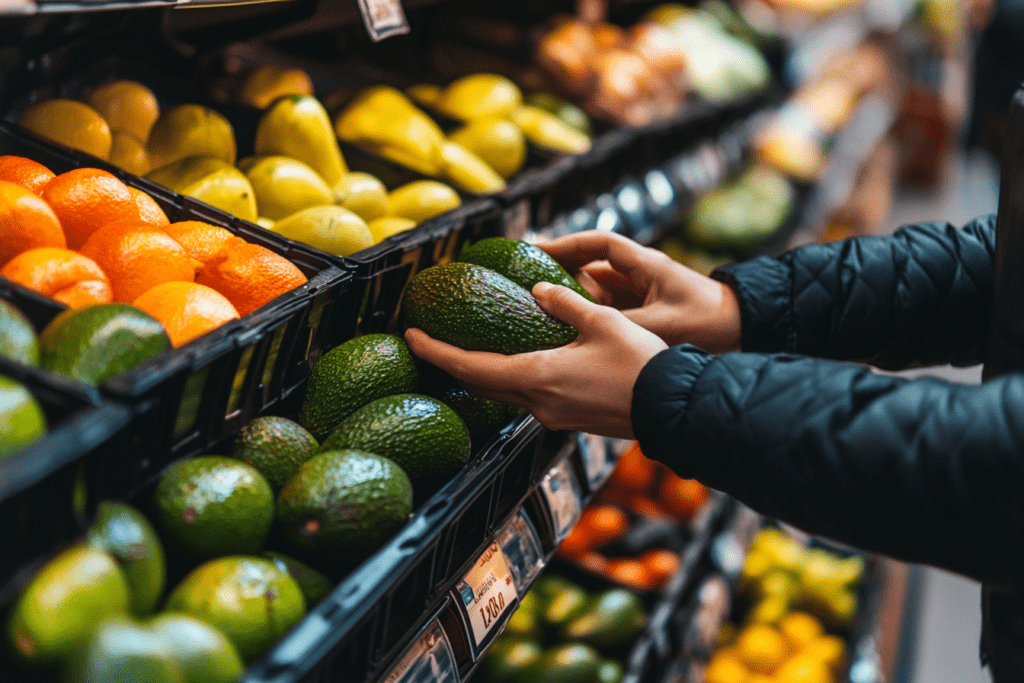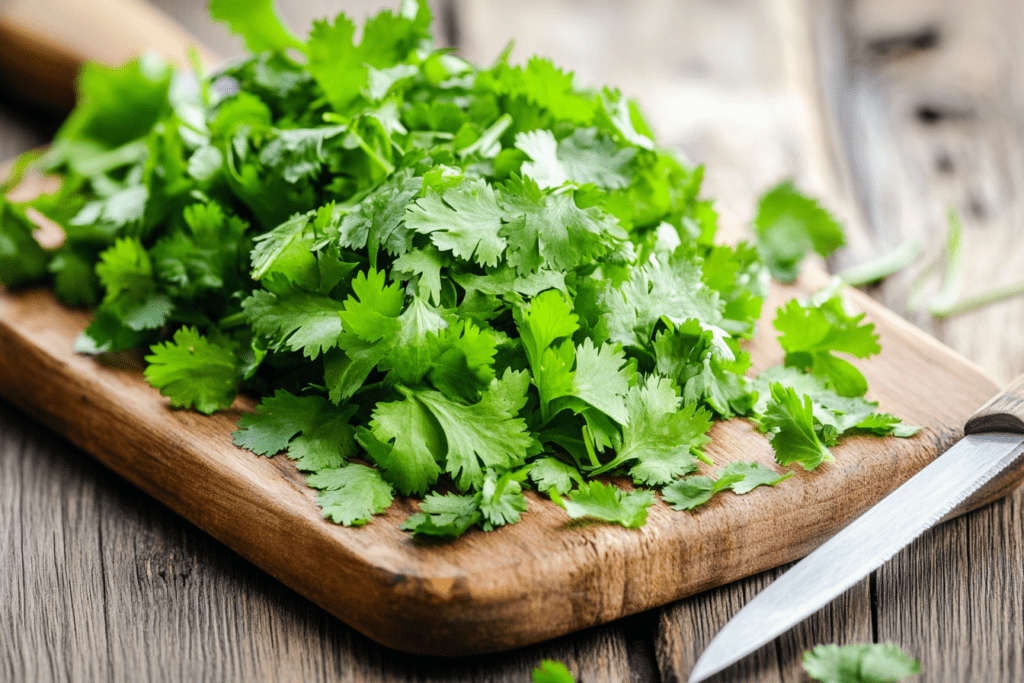Let’s be honest – we’ve all had bad guacamole. Brown, bland, or just plain boring. But here’s the thing: making great guacamole isn’t hard once you know what mistakes to avoid. Whether you’re prepping for game day or just craving the perfect dip, these simple fixes will take your guacamole from mediocre to memorable.
How to actually tell if avocados are ripe
Selecting the right avocado is crucial for a mouthwatering guacamole. Unripe avocados not only make it difficult to mash but also lack the creamy texture and rich flavor essential for the dip.
A simple trick to pick ripe avocados is the gentle squeeze test. When you apply light pressure, the avocado should yield slightly without feeling mushy. Also, check under the stem; if it comes off easily and reveals green underneath, it’s ripe and ready.

For those in a hurry, placing unripe avocados in a paper bag with a banana can speed up the ripening process. The ethylene gas produced by bananas accelerates ripening, making your avocados guacamole-ready in no time.
Remember, overripe avocados can have brown spots and a mushy texture, which can affect the taste and appearance of your guacamole. So aim for that perfect ripeness for the best results.
Most people don’t use enough seasoning
Seasoning can make or break your guacamole. Many assume that avocados alone are enough, but forgetting to properly season can result in a bland dip.
A pinch of coarse salt not only enhances the flavors but also helps in breaking down the avocado when mashing. Consider using sea salt or kosher salt for a better texture.
Don’t shy away from adding a bit of freshly ground black pepper or even a dash of cayenne for some heat. These small additions can elevate the overall taste significantly.
Adjusting the seasoning to your preference is key. Always taste as you go to ensure the perfect balance of flavors.
Why skipping fresh cilantro ruins everything

Cilantro is a staple in authentic guacamole recipes, adding a burst of freshness that complements the richness of avocados.
Leaving out cilantro can result in a guacamole that lacks depth and that signature Mexican flair. If you’re not a fan of cilantro, consider substituting with fresh parsley for a different yet delightful taste.
Chopping the cilantro finely ensures it’s evenly distributed, infusing every bite with its aromatic flavor. Remember, fresh herbs make a significant difference in homemade guacamole.
In some regions, adding cilantro is non-negotiable, highlighting its importance in traditional recipes.
Real lime juice makes a huge difference
The convenience of bottled lime juice might be tempting, but it doesn’t hold a candle to the zesty punch of freshly squeezed lime.
Fresh lime juice not only adds brightness but also prevents the avocado from browning too quickly, thanks to its natural antioxidants.
Bottled lime juice often contains preservatives that can alter the taste of your guacamole, leaving an artificial aftertaste.
For the best results, always keep fresh limes on hand. Rolling them on the counter before juicing can help you extract more juice.
Stop turning your guacamole into paste
Achieving the ideal texture is key in guacamole. Overmixing can turn your dip into a smooth paste, losing the delightful chunks of avocado that many love.
A fork or a mortar and pestle works best to gently mash the avocados while leaving some texture. Avoid using blenders or food processors, which can overdo it.
Mixing in the other ingredients gently helps maintain the individual flavors and textures, making your guacamole more interesting with every bite.
Remember, guacamole is all about balance—both in flavor and texture. Less mixing often yields a more satisfying dip.
Taste testing is the key to success
Cooking without tasting is like painting without seeing the colors. Not sampling your guacamole as you prepare it can lead to imbalances in flavor.
Ingredients like lime juice, salt, and chili peppers can vary in intensity, so it’s essential to adjust quantities based on taste.
By tasting as you go, you can tweak the recipe to suit your preferences, ensuring the final product is just right.
This simple habit can turn a good guacamole into a great one, tailored perfectly to your palate.
Timing matters with watery ingredients
Timing plays a crucial role in guacamole preparation. Adding ingredients like tomatoes and onions too early can make your dip watery.
Tomatoes release moisture over time, which can dilute the creamy texture of your guacamole if added too soon.
Consider adding watery ingredients just before serving to keep your guacamole fresh and chunky.
This small adjustment can maintain the dip’s ideal consistency, especially if it’s going to sit out for a while during a gathering.
Keep your guacamole from turning brown
Guacamole is notorious for turning brown quickly due to oxidation. Improper storage can accelerate this unappetizing change.
A tried-and-true method to keep guacamole fresh is to press plastic wrap directly onto the surface, minimizing air contact.
Alternatively, adding a thin layer of lime juice on top before sealing can help preserve the vibrant color.
For extended freshness, consider storing it in an airtight container with a layer of water on top, as suggested by some chefs.
The right tools make better guacamole
The tools you use can affect the outcome of your guacamole. Metal utensils can sometimes react with the avocado, altering the taste.
Opt for wooden or ceramic tools when possible. A traditional molcajete not only mashes avocados perfectly but also enhances the flavor.
Using a sharp knife for chopping ingredients ensures clean cuts and better texture in your dip.
Choosing the right tools can make the process smoother and the end result tastier.
Best Homemade Guacamole
Course: Appetizer, SnackCuisine: Mexican4
servings15
minutes5
minutes200
kcalThis authentic guacamole recipe unlocks the secret to making the creamiest, most flavorful dip ever.
Ingredients
3 ripe avocados
1 small red onion, finely chopped
2 Roma tomatoes, seeded and diced
2 tablespoons fresh cilantro, chopped
1 jalapeño pepper, seeded and minced
2 cloves garlic, minced
Juice of 1 lime
Salt to taste
Optional: pinch of ground cumin
Directions
- Cut the avocados in half lengthwise and remove the pits. Scoop out the flesh into a medium bowl using a spoon. Gently mash the avocados with a fork, leaving some chunks for texture.
- Add the freshly squeezed lime juice to the mashed avocados. Stir gently to combine, ensuring the lime juice coats the avocado to prevent browning.
- Fold in the finely chopped red onion and minced garlic. Mix carefully to distribute them evenly throughout the avocado without overmixing.
- Incorporate the diced Roma tomatoes into the mixture. Gently stir them in, being cautious not to mash them to keep the guacamole chunky.
- Add the minced jalapeño pepper to the bowl. Adjust the amount based on your preferred spice level, remembering to remove the seeds for a milder flavor.
- Sprinkle in the chopped fresh cilantro. Stir gently to combine, allowing the herb’s aroma to infuse the guacamole.
- Season the mixture with salt to taste. If using, add a pinch of ground cumin to enhance the depth of flavor. Stir lightly to incorporate the seasoning.
- Taste the guacamole and adjust the seasoning as needed. Serve immediately or store properly to maintain its fresh green color.
Notes
- For a spicier kick, leave some jalapeño seeds in the mix.
- To keep guacamole from browning, press plastic wrap directly onto the surface before refrigerating.
- Use fresh lime juice instead of bottled for the best flavor and to prevent browning.
Frequently Asked Questions
Q: How can I prevent my guacamole from turning brown quickly?
A: To keep your guacamole fresh and green, add lime juice and store it in an airtight container. Press plastic wrap directly onto the surface to minimize air exposure, or try adding a thin layer of water on top before sealing and refrigerating.
Q: Can I make guacamole ahead of time for a party?
A: Yes, you can prepare guacamole a few hours in advance. To maintain its vibrant color, use fresh lime juice and proper storage methods to prevent oxidation.
Q: What can I use if I don’t have fresh jalapeños?
A: If fresh jalapeños aren’t available, you can substitute with a pinch of cayenne pepper or use canned green chilies for a milder heat.
Q: Is it okay to omit cilantro if I don’t like it?
A: Absolutely, if you’re not a fan of cilantro, you can leave it out or replace it with fresh parsley for a different flavor profile.



